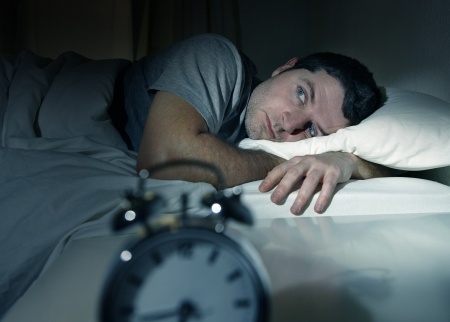 There are several criteria that doctors follow for diagnosing OSA. These include how the patient reports their sleeping habits, family medical history, personal medical history, and the result of studies they may be ordered to get a more clinical overview of how well a patient sleeps. When OSA is first suspected, either by the patient or doctor, one of the first recommendations made is to create a sleep journal. It is basically a detailed accounting of sleeping habits and observations. Patients are asked to record the times they go to sleep, notes on the quality of sleep, and how they feel after resting. Important signs such as headaches and fatigue, especially after what is considered a normal amount of sleep, can be an indication of sleep disturbances.
There are several criteria that doctors follow for diagnosing OSA. These include how the patient reports their sleeping habits, family medical history, personal medical history, and the result of studies they may be ordered to get a more clinical overview of how well a patient sleeps. When OSA is first suspected, either by the patient or doctor, one of the first recommendations made is to create a sleep journal. It is basically a detailed accounting of sleeping habits and observations. Patients are asked to record the times they go to sleep, notes on the quality of sleep, and how they feel after resting. Important signs such as headaches and fatigue, especially after what is considered a normal amount of sleep, can be an indication of sleep disturbances.
In Addition to Sleeping Habits
Doctors may discuss family medical history and examine the patient’s general medical state. Obesity, inactivity, and mental disorders are just a few of factors that can contributes to developing OSA, or exacerbate existing issues with OSA. Aside from a short term sleeping journal, a more in depth look at past sleeping habits may be sought through questions regarding the patient’s history of sleeping habits. Questions regarding insomnia, fatigue, and headaches are generally asked to try and determine how long the potential OSA has been occurring. A physical examination of the nose and throat is often done as well to determine if there are any physical abnormalities that may explain issues with a proper sleep cycle. Based upon the evaluation, the doctor may order additional testing that can include: psychological evaluation to rule out mental disorders that may be disrupting sleep, blood work to rule out endocrine problems, and sleep studies to determine the actual presence of OSA.
Sleep Studies: Polysomnogram and Home Monitoring
A polysomnogram is an extensive form of study that is conducted at a sleep lab. It closely monitors the brain’s activity, eye movements, breathing, pulse, and blood pressure. Extensive versions also monitor leg movement and other elements to determine if there are potentially neurological factors limiting sleep cycles. Polysomnograms require professional monitoring and administration to ensure all of the monitoring leads and sensors are attached to the patient.
At home monitoring is a more simplified form of testing that can also be used to diagnose OSA. A single unit is strapped around the chest and a small number of leads are attached to it. Home monitoring units can register breathing patterns, pulse, and difficulty breathing through the nose, or signs of struggling from the motions of the chest. It is not uncommon for doctors to either stop with in home monitoring, or use it to determine if more extensive testing is required.

